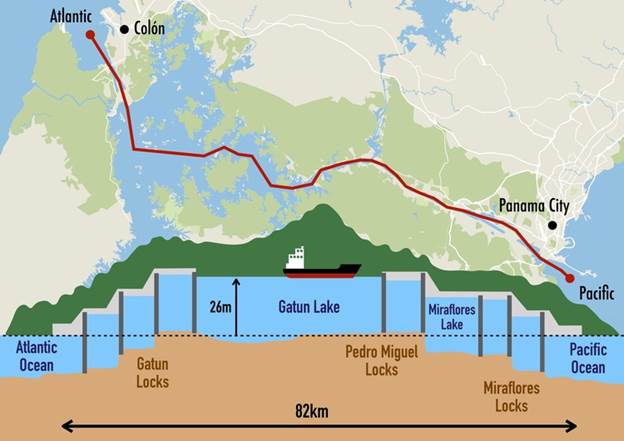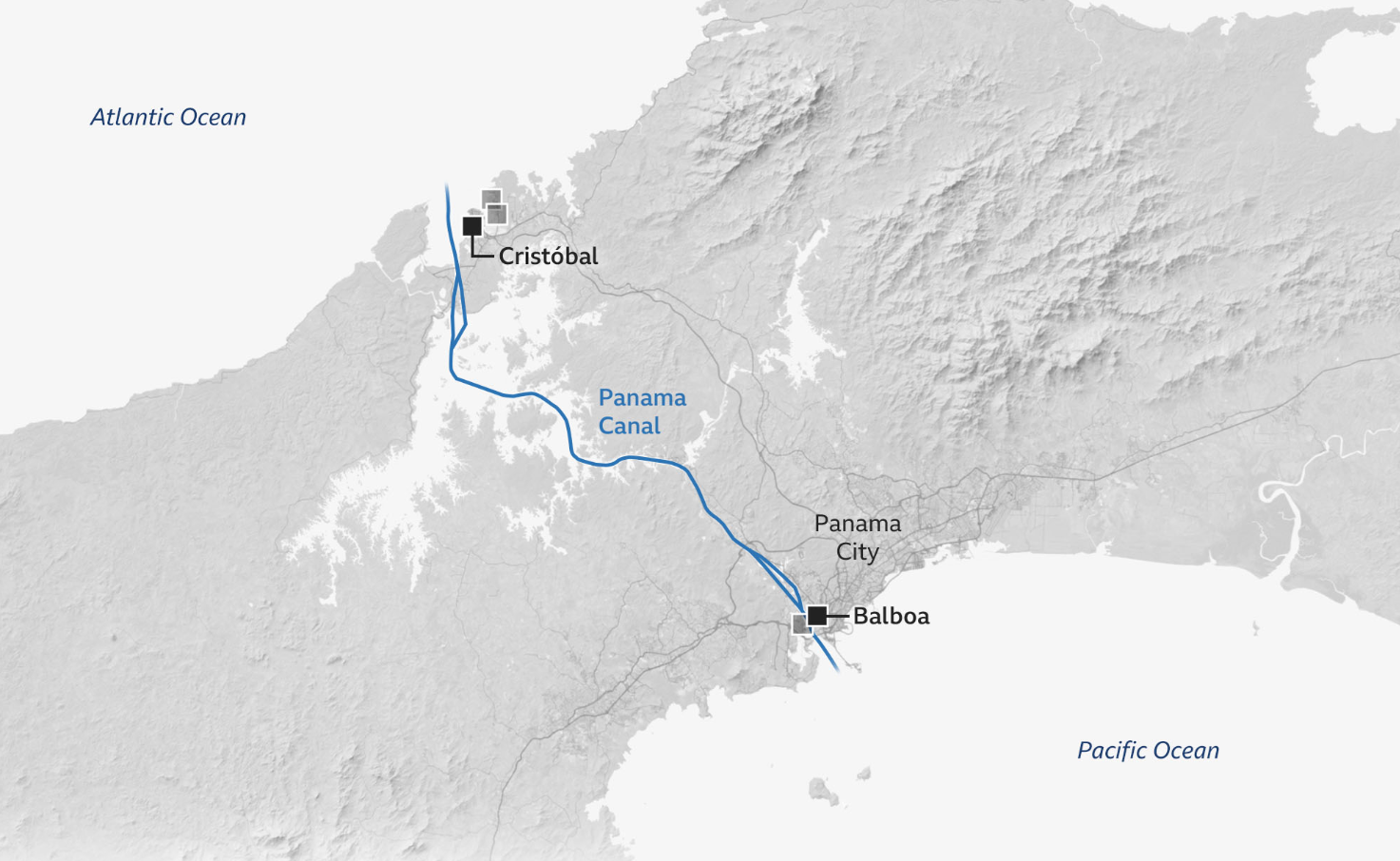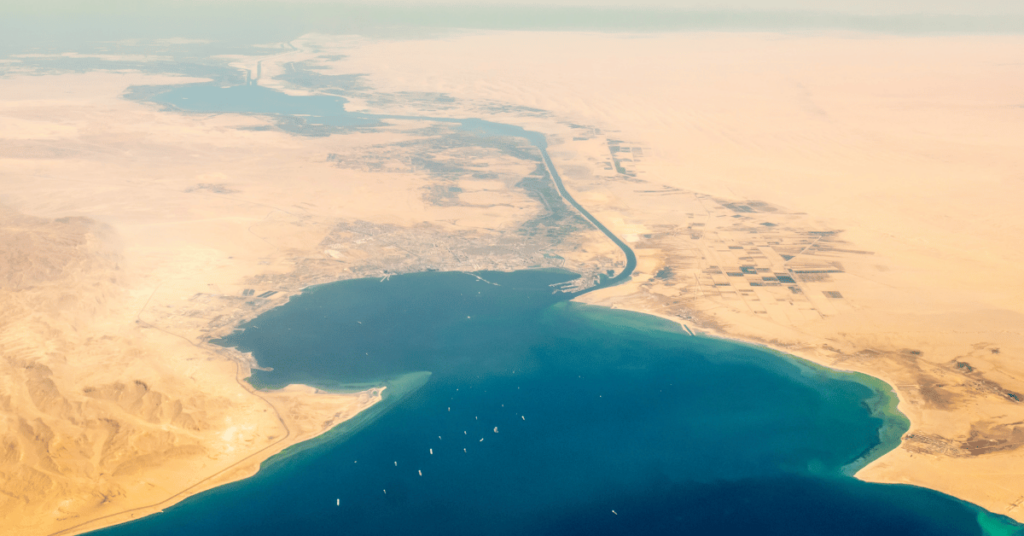Recent statements by U.S. President Donald Trump have thrust the Panama Canal—one of the world’s most vital maritime passages—into the spotlight of U.S.-China tensions, raising questions about sovereignty, neutrality, and strategic control of this crucial waterway.
Trump Claims China Controls Canal, Threatens Action
In his inaugural address, President Trump repeated accusations that Panama has ceded control of the canal to China and claimed Chinese troops are stationed there, though he provided no evidence for these assertions. Both Panama’s government and Beijing have firmly rejected these claims.
Strategic Importance and Historical Context
The Panama Canal, an 82-kilometer artificial waterway connecting the Pacific and Atlantic Oceans, was constructed by the United States after earlier French attempts failed. The U.S. maintained control until 1999, following the 1977 Torrijos-Carter Treaties that transferred authority to Panama.

The waterway, ranked as one of the seven wonders of the modern world by the American Society of Civil Engineers, saves ships thousands of miles and weeks of travel that would otherwise be required to navigate around South America.
China’s Growing Footprint Around the Canal
While Panama maintains operational control of the canal itself, Chinese entities have established a significant presence in surrounding infrastructure: 
- Hong Kong-based CK Hutchison Holdings has operated two critical terminals—Balboa on the Pacific side and Cristóbal on the Atlantic side—for more than two decades
- China became the second-largest user of the canal after joining the Belt and Road Initiative (BRI) in 2017.
- Chinese shipping now represents approximately 21% of all goods passing through the canal.
- Chinese companies have been involved in constructing bridges across the canal, including a fourth bridge currently under development.
- China Harbour Engineering Company built the Amador Cruise Terminal on the Pacific side.
- China Railway Tunnel Group is extending the Panama City Metro.
Strategic Significance of Port Operations
Control over the ports at either end of the Panama Canal carries substantial strategic importance. These operators:
- Regulate access and manage shipping traffic
- Provide critical services like fuel, repairs, and storage
- Collect valuable data on global trade patterns and vessel movements
- Can influence supply chain security and trade efficiency
U.S. security experts have raised concerns that Chinese-operated ports could:
- US suspects that China could will monitor U.S. naval movements by tracking vessels.
- During periods of tension, such ports might disrupt commerce by implementing selective delays or inspections specifically targeting U.S. vessels, creating economic pressure points while remaining below thresholds that would trigger direct confrontation.
- Most concerning is the possibility that these civilian port facilities could conceal covert Chinese military or intelligence assets under commercial cover, establishing dual-use infrastructure that could be activated or repurposed during conflict scenarios.
- While there is no evidence of military activities, China’s national security laws extend to Hong Kong, meaning private Hong Kong companies could theoretically be compelled to follow Chinese directives. As China’s usual habit keeping their trained or retired personnel all over the world living normal lives and appearing as ordinary businesspeople, tourists, or expatriates, these individuals could potentially serve as assets in strategic locations like ports without drawing attention.
Recent Challenges and Rising Costs
Between 2023 and 2024, a severe drought aggravated by climate change lowered the level of lakes feeding the canal, forcing administrators to restrict transits and vessel draft. This increased costs and waiting times significantly.
Though passage restrictions were lifted late last year, the waterway has not yet seen a full return to normal traffic, as many shippers—especially bulk carriers and liquefied natural gas tankers—have continued using alternative routes.
The canal’s toll system has also been restructured multiple times to reflect vessel size, type, and its growing economic value. Between fiscal years 2020 and 2023, toll revenue increased almost 26% to $3.35 billion. In fiscal year 2023, the canal offset reduced vessel traffic with a water surcharge and slot auctions that rose to as much as $4 million per vessel.
Shifting Balance of Power
Despite China’s growing influence, the United States remains the canal’s largest user, with approximately 3.5 times more goods and cargo passing through to the U.S. than to China.
Panama’s experience under the BRI appears to have fallen short of expectations, with several promised projects either shelved or failing to materialise, including:
- Port on the Caribbean side (Isla Margarita) cancelled in 2022
- High-speed rail line from Panama City to David shelved by the new government
- New Chinese embassy on the Amador Causeway Islands cancelled in 2018
In what appears to be a response to growing concerns, CK Hutchison has reportedly agreed to sell its port operations to U.S.-based investment company BlackRock—a move widely seen as an American effort to counter Chinese influence.
Panamanian authorities have also recently announced an audit of CK Hutchison’s port operations, investigating the firm’s compliance with concession agreements and whether it is adequately reporting revenues and state payments.
Global Implications
As climate change continues to threaten the canal’s operations and geopolitical tensions rise, the strategic value of this waterway is likely to increase further. At the crossroads of oceanic commerce, Panama balances precariously between competing superpowers – one that built its famous canal and another investing billions in its future development.
For now, the Panama Canal remains under Panamanian control but the canal that once represented American engineering prowess now reflects a changing world order, as Panama navigates the delicate diplomacy of being both historical partner to the US and potential jewel in China’s Belt and Road Initiative.


